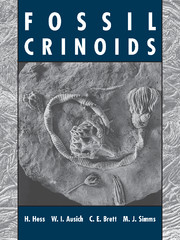Prelude
Published online by Cambridge University Press: 10 November 2010
Summary
When we stand on a wave-swept shore, the physical force of the waves is the dominant stimulus to our imagination. The surface of the ocean is grey and blue, stretching as far as the eye can see, frosted by waves curling and breaking under the wind. The sea appears to be lifeless and empty. No hint of the life teeming within it is evident, except in tide pools along the shore or in the bounty offered by fishermen who have just landed their catch.
During the 1800s, we began to probe the sea in a scientific manner. Our sampling was remote – we used dredges and nets. We were surprised at some of the animals we recovered. Among these were great masses of stalked crinoids, which looked like living fossils. The advent of scuba diving and deep-diving submersibles finally opened the door to direct observation and study. Crinoids were described as being virtually extinct. But dive the Great Barrier Reef in Australia: more than 50 species live there. Free-living crinoids festoon the reef, arms spread in broad fans to filter the water, or they are tucked into crevices, hidden from predators. Dive reefs throughout the western Pacific – in Indonesia, Malaysia, Papua New Guinea and Fiji, and the vertical underwater cliffs at Palau; free-moving crinoids are abundant and numerous. Cross the Indian Ocean to Mauritius, the Seychelles, Tanzania, and the fabled spice island of Zanzibar, and there they are again. Dive the Red Sea at night. By day, the white plates of coralline animals are barren of apparent life. At night they are covered with masses of red crinoids that have come out to feed.
Information
- Type
- Chapter
- Information
- Fossil Crinoids , pp. xi - xiiPublisher: Cambridge University PressPrint publication year: 1999
